Douglas Lake, spanning 28,000 acres in East Tennessee, is a premier fishing destination managed by the Tennessee Valley Authority․ Known for its diverse fish species and scenic beauty, the lake offers year-round angling opportunities, recovering nicely after Hurricane Helene․ Its fertile waters attract anglers seeking bass, crappie, and catfish, making it a must-visit spot nestled at the foothills of the Great Smoky Mountains․

1․1 Overview of Douglas Lake’s Fishing Opportunities
Douglas Lake offers exceptional fishing opportunities, attracting anglers with its diverse fish species and scenic waters․ Renowned for its largemouth and smallmouth bass, the lake also boasts abundant crappie, bluegill, and catfish populations․ The lake’s structure, featuring numerous creeks and embayments like The Flat and Muddy Creek, provides ideal habitats for various fish․ Seasonal patterns and guided trips enhance the angling experience, making it a top destination for both novice and experienced fishermen․ With its fertile waters and recovery from past challenges, Douglas Lake remains a prime spot for memorable fishing adventures․
1․2 Brief History of Fishing in Douglas Lake
Fishing in Douglas Lake has a rich history, dating back to its creation in the 1940s by the Tennessee Valley Authority․ Initially known for its abundant sauger and walleye populations, the lake gradually became famous for bass and crappie․ Over the years, fishing regulations have evolved, with recent proposals to reduce bass limits to conserve populations․ Historical events, such as post-Hurricane Helene recovery efforts, have highlighted the lake’s resilience․ Today, Douglas Lake is celebrated for its diverse fishery and community-driven fishing tournaments, making it a cornerstone of regional angling traditions and economic growth․

Popular Fish Species in Douglas Lake
Douglas Lake is renowned for its diverse fishery, featuring largemouth bass, smallmouth bass, crappie, bluegill, and catfish․ These species attract anglers of all skill levels year-round․
2․1 Largemouth Bass
Largemouth bass are a prized catch in Douglas Lake, with anglers targeting them using a variety of techniques․ The lake’s structure, including submerged logs and weed beds, provides ideal habitats for these fish․ Seasonal patterns play a significant role, with spring being a particularly productive time as bass move into shallower waters for spawning․ Anglers often use soft plastics, crankbaits, and topwater lures to entice strikes․ The Tennessee Wildlife Resources Agency has implemented regulations to ensure sustainable fishing, making Douglas Lake a must-visit for bass enthusiasts seeking both quantity and quality․
2․2 Smallmouth Bass
Smallmouth bass are highly sought after in Douglas Lake for their aggressive behavior and strong fighting ability․ Anglers often target them using jigs, spinnerbaits, and crankbaits near rocky banks and submerged structures․ Summer months see smallmouth patrolling deeper waters, while spring brings them to shallower areas for spawning․ The lake’s clear waters and diverse habitat make it an ideal location for both novice and experienced anglers․ Recent proposals to reduce the bag limit aim to conserve the population, ensuring sustainable fishing for years to come․ Smallmouth bass fishing in Douglas Lake remains a thrilling experience, attracting enthusiasts from across the region․
2․3 Crappie

Crappie are a popular game fish in Douglas Lake, renowned for their strong fighting ability and flavorful meat․ Both white and black crappie thrive in the lake’s diverse habitat․ Anglers often target them using jigs, minnows, and spinnerbaits near submerged logs, rocky banks, and coves․ Spring brings crappie to shallower waters for spawning, while summer finds them in deeper, cooler areas․ The lake’s clear waters and abundant cover make it an ideal spot for crappie fishing․ Seasonal patterns and techniques vary, but consistent action makes crappie a favorite among Douglas Lake anglers of all skill levels․
2․4 Bluegill
Bluegill are abundant in Douglas Lake, offering exciting opportunities for anglers of all skill levels․ These panfish thrive in shallow, vegetated areas and near submerged structures․ Anglers typically use live bait like worms, crickets, or small jigs to catch them․ Fly fishing with tiny poppers can also be effective․ Bluegill are a great species for family fishing trips due to their aggressive bites and strong fights․ They provide consistent action throughout the year, making them a favorite among both novice and experienced anglers seeking a fun and rewarding fishing experience on Douglas Lake․
2․5 Catfish
Catfish are a popular and abundant species in Douglas Lake, offering exciting opportunities for anglers․ Channel catfish and blue catfish are commonly found, with the latter growing to significant sizes․ These fish thrive in deeper waters and near submerged structures․ Anglers often use nightcrawlers, stink baits, or chicken livers to entice bites․ Catfishing is particularly productive at night, making it a great activity for those who enjoy evening fishing trips․ The strong fights and plentiful populations make catfish a favorite among both experienced anglers and families seeking a memorable fishing experience on Douglas Lake․
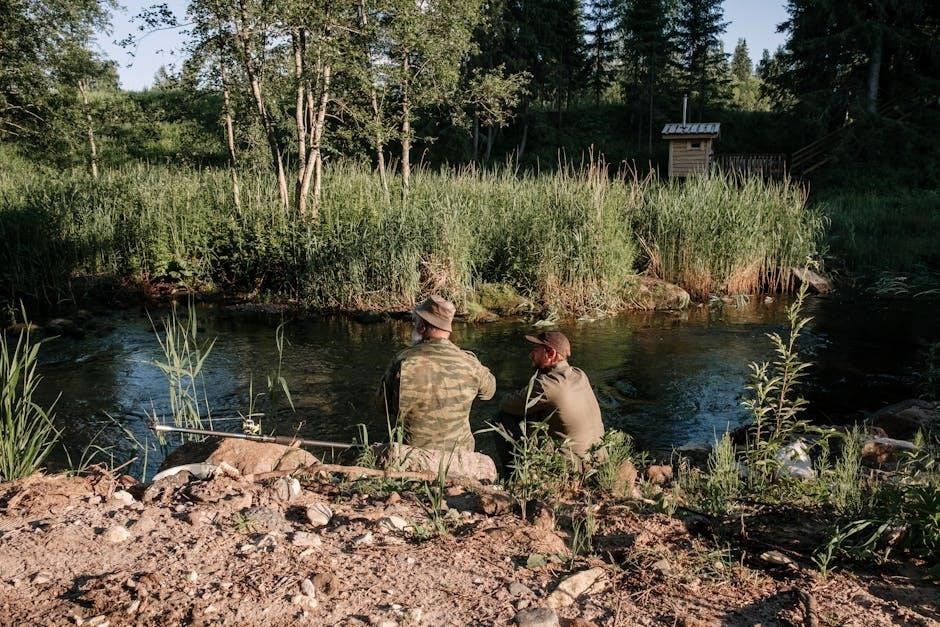
Key Fishing Locations on Douglas Lake
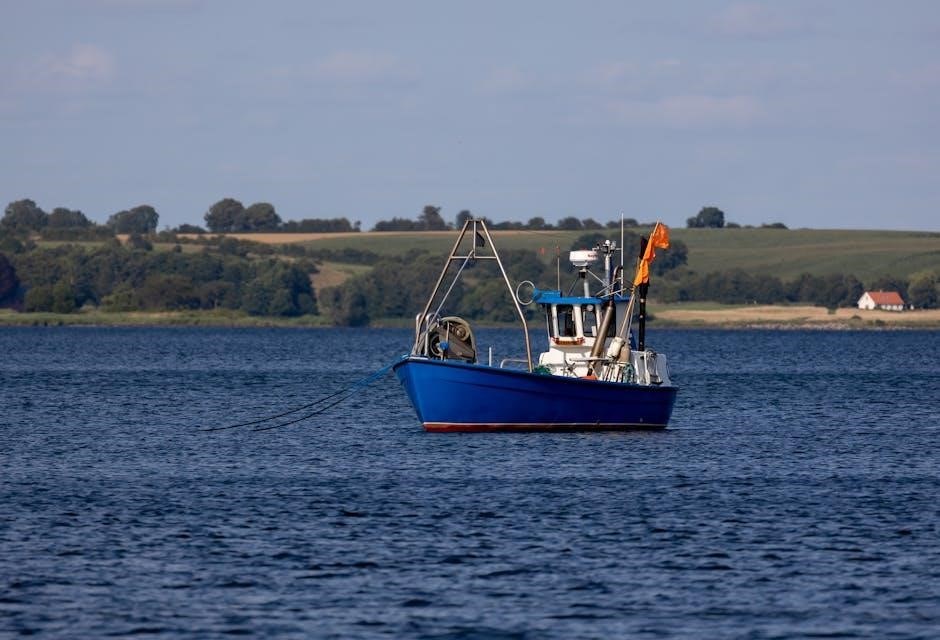
Douglas Lake’s prime fishing spots include The Flat, Muddy Creek, McGuire Creek, and Nina Creek Embayments․ These areas are renowned for their consistent productivity and diverse fish species․
3․1 The Flat
The Flat is a highly productive area on Douglas Lake, known for its shallow waters and abundant cover․ This location attracts a variety of fish species, including largemouth bass and crappie, due to its nutrient-rich environment․ During spring, The Flat is particularly active as fish move into shallower areas for spawning․ Anglers often find success using jigs and minnows in this region․ The Flat’s structure, with its submerged vegetation and gravel beds, provides an ideal habitat for fish, making it a hotspot for both experienced and novice anglers seeking a rewarding fishing experience․
3․2 Muddy Creek
Muddy Creek is a key fishing location on Douglas Lake, renowned for its structure and productivity․ The creek’s rocky banks and sunken logs provide excellent cover for bass and crappie․ During spring, fish move into the creek’s shallower areas for spawning, making it a hotspot for largemouth and smallmouth bass․ In the fall, the creek comes alive as fish feed actively before winter․ Anglers often use jigs, crankbaits, and spinnerbaits to target these species․ Muddy Creek’s diverse habitat makes it a consistent producer, offering exciting opportunities for anglers of all skill levels throughout the year․
3․3 McGuire Creek
McGuire Creek is a key fishing location on Douglas Lake, known for its abundant baitfish and structural elements that attract a variety of species․ The creek’s deep channels and submerged logs provide ideal habitat for bass and crappie․ Anglers often target largemouth and smallmouth bass here, using techniques like crankbaits and soft plastics․ During spring, fish move into the creek’s shallower areas, while summer sees them holding near deeper structures․ McGuire Creek’s consistent productivity makes it a favorite among locals and visitors, offering exciting opportunities year-round for anglers seeking trophy catches․
3․4 Nina Creek Embayments
Nina Creek Embayments are highly productive areas for fishing on Douglas Lake, offering shallow waters and abundant structural elements․ These embayments attract crappie, bass, and panfish, making them ideal for anglers seeking a variety of species․ The creek’s submerged logs, weed beds, and sunken brush provide excellent cover for fish․ During spring, largemouth bass often move into the shallower areas to spawn, while crappie congregate near structure; Summer fishing focuses on deeper drop-offs and shaded areas․ Nina Creek’s embayments are less crowded than other spots, offering a peaceful and rewarding fishing experience for both novice and experienced anglers․
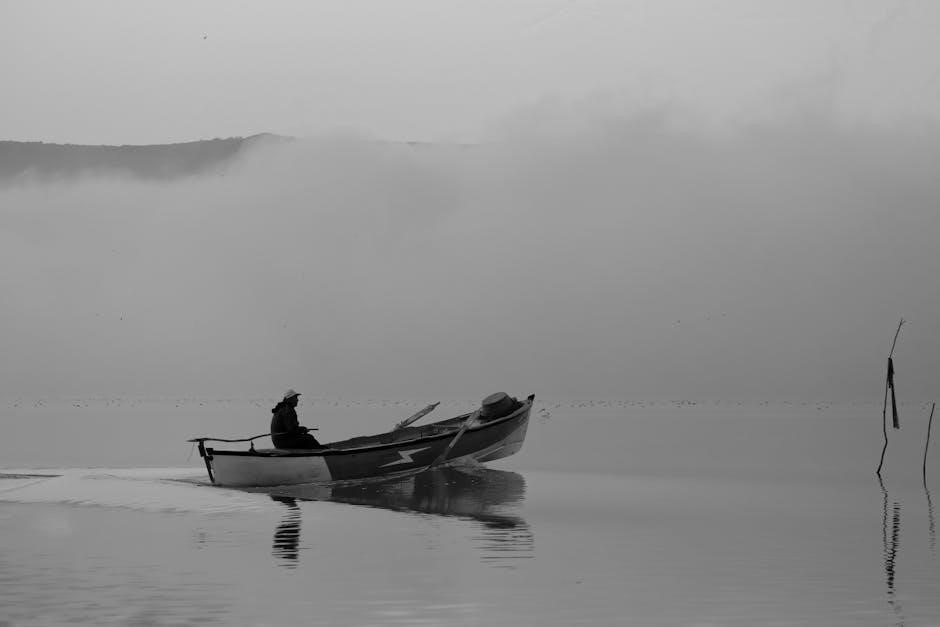
Seasonal Fishing Patterns
Douglas Lake’s fishing patterns vary by season, with spring spawning, summer deep-water tactics, and fall feeding frenzies offering unique angling opportunities for both novice and experienced anglers․
4․1 Spring Fishing Techniques
Spring fishing on Douglas Lake is highly productive, with anglers targeting species like largemouth bass, crappie, and bluegill․ Key techniques include using jigs, spinnerbaits, and plastic worms near shallow cover such as submerged logs and rocky banks․ The Flat, Muddy Creek, and McGuire Creek are hotspots during this season․ Early morning and late evening are prime times for bites․ Crappie often gather in shallow embayments, while bass move into spawning areas․ Anglers should adapt to changing water temperatures and baitfish movements, making spring a dynamic and rewarding time to fish on Douglas Lake․
4․2 Summer Fishing Strategies
Summer fishing on Douglas Lake requires adapting to warmer waters and deeper fish activity․ Anglers should focus on early morning and late evening bites when fish are most active․ Target species like largemouth bass near submerged structures, rocky drop-offs, and weed beds using deep-diving crankbaits or plastic worms․ Crappie and bluegill can be found in shaded areas or near sunken logs․ Catfish thrive in deeper, cooler waters near the lake’s channels․ McGuire Creek and Nina Creek Embayments are productive spots during summer; Use jigs or live bait for crappie, while bass often strike at topwater lures during low-light hours․ Adjust tactics as fish move deeper midday․
4․3 Fall Fishing Tips
Fall fishing on Douglas Lake offers exciting opportunities as cooler waters activate fish appetites․ Focus on The Flat, Muddy Creek, and McGuire Creek for consistent bites․ Largemouth and smallmouth bass become aggressive, striking spinnerbaits and crankbaits near submerged structures․ Crappie move to shallower waters, feeding on minnows and jigs․ Walleye can be caught using nightcrawlers or trolling deep-diving lures․ Early morning and late evening are prime times as fish feed heavily before winter․ Transition from topwater lures to deeper presentations as the season progresses․ Capitalize on the fall shad migration, as it attracts predatory species to feeding areas․
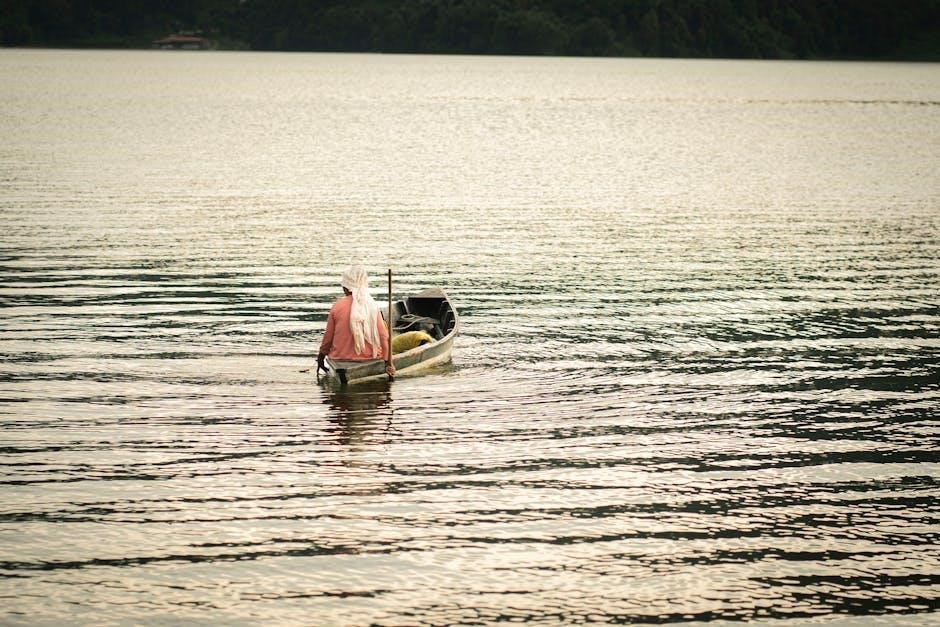
Regulations and Safety
Bag limits for bass on Douglas Lake may be reduced to 5, with only one largemouth allowed during summer months․ Adhere to safety guidelines for boating․
5․1 Bag Limits and Size Restrictions
Bag limits on Douglas Lake are designed to conserve fish populations․ Largemouth and smallmouth bass have a proposed catch limit of 5, with only one largemouth allowed during summer․ Crappie limits typically allow 15 per person, while catfish have no size restrictions but a 10-fish limit․ Seasonal adjustments may apply, especially for bass․ Anglers must adhere to size restrictions to ensure sustainable fishing․ Always check TWRA guidelines for the most current regulations before your trip to ensure compliance and help preserve Douglas Lake’s fishery․
5․2 Safety Guidelines for Boating and Fishing
Ensure a safe fishing experience on Douglas Lake by following essential guidelines․ Always wear a properly fitted life jacket, and carry a first aid kit․ Be aware of changing weather conditions and monitor lake levels․ Use navigation lights when boating at dawn or dusk․ Carry a reliable means of communication and inform someone of your itinerary․ Avoid swimming in designated fishing areas and be cautious of other watercraft․ Familiarize yourself with boating regulations and obtain necessary permits․ Adhere to all posted safety signs and respect restricted zones to ensure a secure and enjoyable adventure on the water․
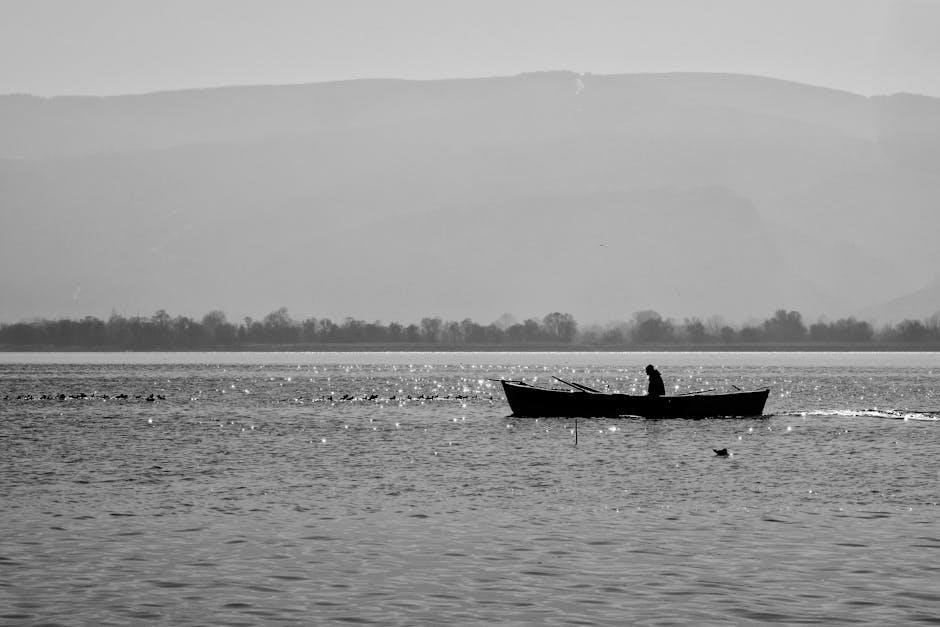
Choosing the Right Gear
Selecting the right gear is crucial for a successful fishing trip on Douglas Lake․ Medium to heavy action rods and reels are ideal for targeting bass, while lighter gear works well for panfish․ Use high-strength fishing line appropriate for the species you’re pursuing; Jigs, spinnerbaits, and plastic worms are popular lures, while live bait like worms and minnows can be highly effective․ Always check local regulations for specific gear restrictions and consider consulting a guide for personalized recommendations to maximize your fishing experience․
6․1 Recommended Fishing Gear for Douglas Lake
For a productive fishing experience on Douglas Lake, medium to heavy action rods and reels are ideal for targeting bass and larger species․ Use high-strength monofilament or braided fishing line, typically 10-20 lb test, to handle the lake’s diverse fish․ Jigs, spinnerbaits, and soft plastic lures are effective for bass, while crappie and panfish respond well to smaller jigs and live bait․ Catfish anglers should opt for sturdy bottom-fishing gear and bait like nightcrawlers or stink baits․ Always check local regulations for gear restrictions and consider consulting a guide for species-specific recommendations to ensure a successful and enjoyable trip․
6․2 Best Lures and Baits for Target Species
For largemouth and smallmouth bass, jigs, spinnerbaits, and soft plastic lures like curly tail grubs are highly effective․ Crappie anglers often succeed with minnows or small jigs tipped with crappie nibbles․ Bluegill and panfish respond well to live bait such as red worms or crickets․ Catfish are drawn to nightcrawlers, chicken livers, or stink baits․ Walleye and sauger can be targeted with jigging spoons or live bait rigs․ Seasonal patterns and water conditions often dictate the most productive lures, so adapting your tackle based on the time of year and species behavior is key to a successful fishing trip on Douglas Lake․
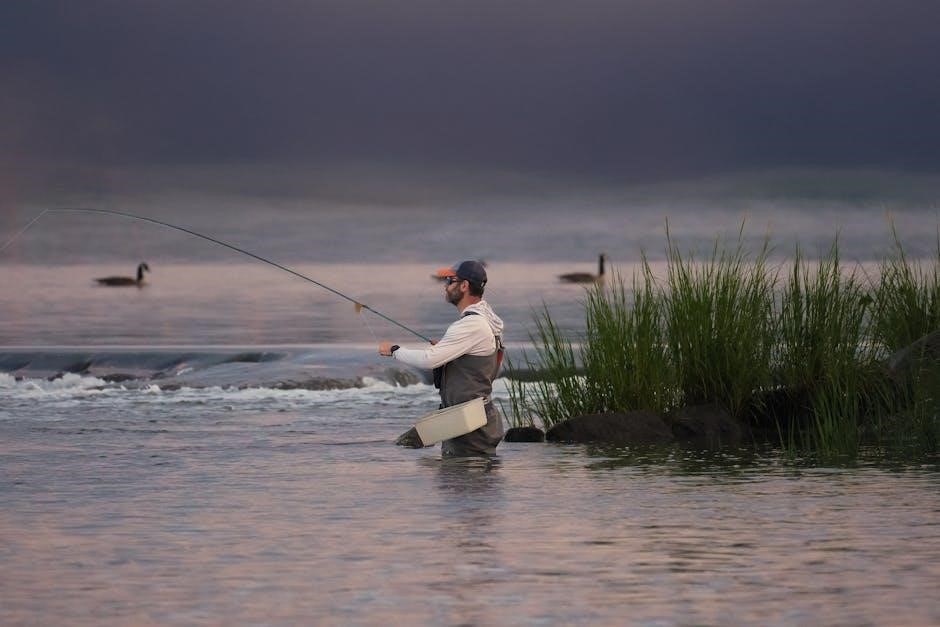
Hiring a Fishing Guide
Hiring a local guide enhances your Douglas Lake fishing experience, offering expert knowledge, proven techniques, and access to hidden hotspots, ensuring a memorable and productive trip․
7․1 Benefits of Guided Fishing Trips
A guided fishing trip on Douglas Lake offers numerous benefits, including expert knowledge of prime fishing spots, proven techniques, and the best lures for target species․ Guides provide valuable insights into seasonal patterns and water conditions, maximizing your catch․ Their experience ensures a safe and enjoyable adventure, allowing you to focus on fishing while they handle navigation and logistics․ Whether you’re a novice or experienced angler, guided trips enhance your overall experience and increase chances of a successful outing on the lake․
7․2 How to Choose the Right Guide
Choosing the right guide for Douglas Lake fishing ensures a successful and enjoyable trip․ Look for guides with extensive local knowledge and a proven track record of catching target species․ Check reviews and ask for referrals to gauge their reputation and expertise․ Ensure they specialize in the type of fishing you’re interested in, such as bass, crappie, or catfish․ Verify their safety protocols, licensing, and experience․ A good guide will tailor the trip to your skill level and preferences, enhancing your overall fishing experience on Douglas Lake․
Planning Your Fishing Trip
Plan your Douglas Lake fishing trip by checking seasonal patterns, water levels, and weather forecasts․ Book guides in advance and ensure all permits and gear are ready․
8․1 Best Times to Fish
The optimal fishing times on Douglas Lake vary by season․ Spring offers excellent opportunities for bass and crappie as they move into shallower waters during spawning․ Summer months see fish seeking deeper, cooler areas, while fall brings active feeding periods as fish prepare for winter․ Early morning and late evening are generally the best times for most species, with peak activity during these low-light conditions․ Anglers should also consider weather patterns, as overcast days can extend feeding periods․ Proper timing can significantly enhance your fishing success on Douglas Lake․
8․2 Weather and Water Conditions
Douglas Lake’s fishing success heavily depends on weather and water conditions․ Water levels fluctuate, managed by the Tennessee Valley Authority, impacting fish habitats․ Clear to stained water clarity is common, varying with seasonal rains․ Optimal water temperatures range from 50°F to 80°F, with fish activity peaking in cooler waters․ Weather events like storms can stir sediment, affecting visibility․ Anglers should monitor real-time data for water levels, temperature, and clarity to maximize their chances․ Adaptive strategies based on these conditions ensure a productive fishing experience on Douglas Lake throughout the year․
Real-Time Fishing Resources
Explore real-time fishing resources like charters, guides, and online platforms for up-to-date Douglas Lake fishing information, ensuring anglers find the best spots, techniques, and secure bookings efficiently․
9․1 Fishing Charters and Guides
Discover top-rated fishing charters and guides on Douglas Lake, offering expert knowledge and memorable experiences․ Many guides specialize in specific species like bass, crappie, or walleye, ensuring tailored adventures․ With years of local experience, they provide insights into prime fishing spots and seasonal patterns․ Charters often include fully equipped boats and gear, catering to both beginners and seasoned anglers․ Secure bookings through trusted platforms like FishingBooker or local services, ensuring a seamless and enjoyable fishing trip on Douglas Lake’s scenic waters․
9․2 Online Booking and Availability
Secure your spot on Douglas Lake with convenient online booking options․ Platforms like FishingBooker offer real-time availability checks, allowing anglers to compare rates and schedules effortlessly․ Many charters provide verified reviews, ensuring transparency and reliability․ With secure payment systems, booking a guided fishing trip has never been easier․ Check availability for top-rated guides and charters, ensuring your preferred dates are reserved․ This streamlined process makes planning your Douglas Lake fishing adventure simple and stress-free, guaranteeing a memorable experience on the water․
